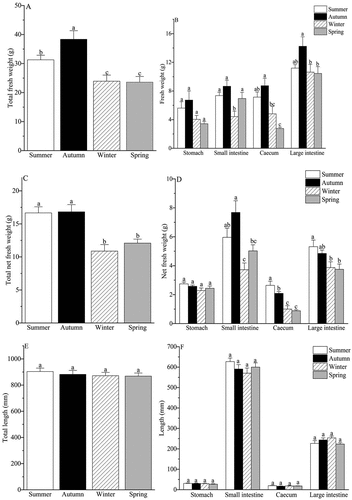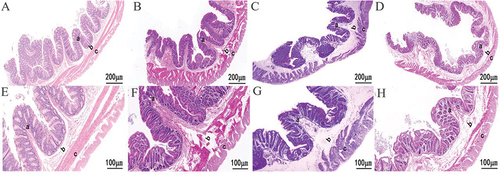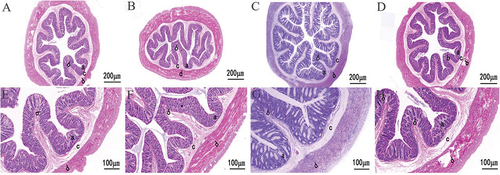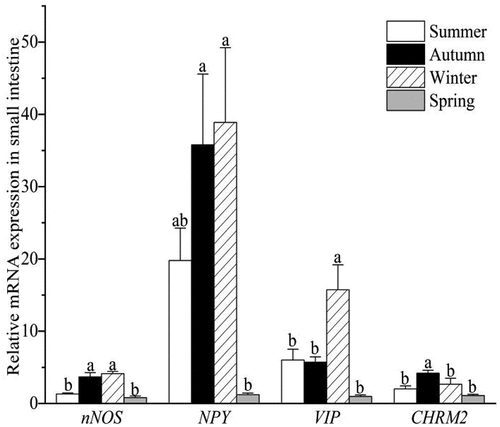Figures & data
Table I. List of primers used in the experiment.
Figure 1. Seasonal variations in body weight of ground squirrel. Groups with different letters in each cluster are significantly different (p < 0.05).

Figure 2. Seasonal variations of the fresh weight, net fresh weight and length in the GI tract in ground squirrel. Groups with different letters in each cluster are significantly different (p < 0.05).

Figure 3. Seasonal variations of histological parameters of the GI tract of ground squirrel. Groups with different letters in each cluster are significantly different (p < 0.05).

Figure 4. Histological structure of the stomach of ground squirrel in different seasons. (A–D) Summer, autumn, winter and spring; (E–H) higher magnification image. Summer, autumn, winter and spring. a. columnar epithelium of the stomach; b. the lamina propria; c. the glandular area of the stomach; d. the mucosa; e. the submucosa of the stomach; f. the muscle layer.

Figure 5. Histological structure of the ileum of ground squirrel in different seasons. (A–D) Summer, autumn, winter and spring; (E–H) higher magnification image. Summer, autumn, winter and spring. (a) ileum villi; (b) ileum gland, (c) submucosa; (d) muscle layer.

Figure 6. Histological structure of the caecum of ground squirrel in different seasons. (A–D) Summer, autumn, winter and spring; (E–H) higher magnification image. Summer, autumn, winter and spring. (a) the structure of cecum fold; (b) submucosa; (c) muscle layer.

Supplemental Material
Download MS Word (17.2 KB)Data availability statement
The data sets generated and/or analyzed during the current study are available from the corresponding author on reasonable request.


